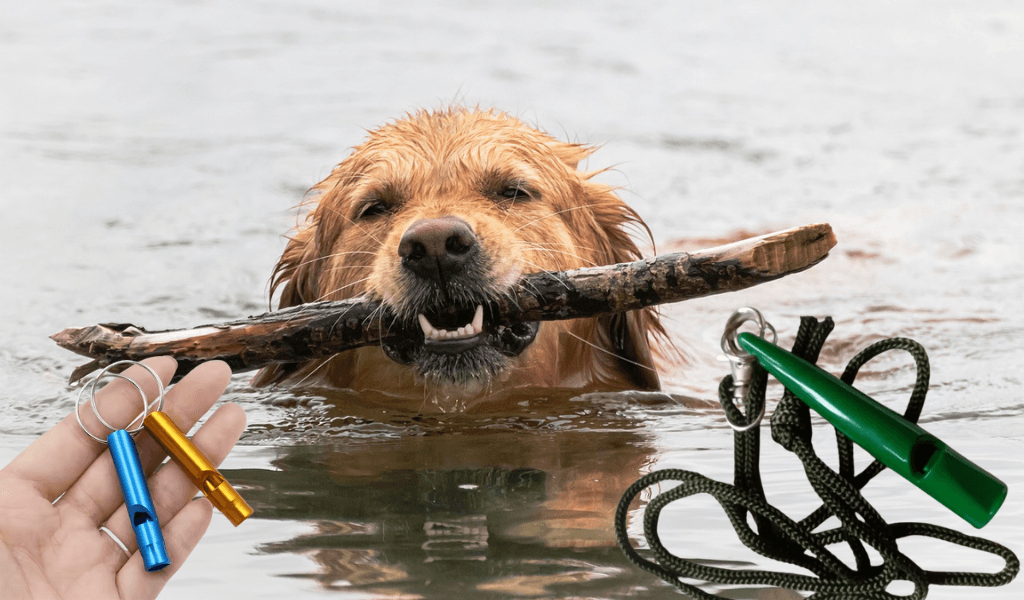Gundog Training Whistles
The Importance of Whistle Training for Gundogs
Whistle training is an essential part of gundog training, providing clear, consistent commands that are effective over long distances.
Unlike voice commands, which can vary in tone and volume, a whistle carries further and remains unchanged, making it an invaluable tool for fieldwork.
In this guide, we’ll explore why whistle training is so important, how to introduce it, and the key whistle commands every gundog should learn.
Why Whistle Training is Essential for Gundogs
1. Whistles Provide Clear and Consistent Commands
Dogs respond to consistency. While voice commands can be affected by emotion, background noise, or wind conditions, a whistle remains the same every time.
This clarity helps dogs understand what is expected of them, even at a distance.
2. Whistles Carry Further than Voice Commands
When working in open fields, woodland, or rough terrain, shouting can be ineffective.
A good gundog whistle carries over long distances, cutting through wind and background noise. This ensures that your commands are heard no matter where your dog is.
3. Whistles Prevent Over-Excitement
Dogs can pick up on human emotions. If a handler is frustrated, a sharp voice command may cause a sensitive dog to hesitate or a high-drive dog to become overexcited.
A whistle removes this issue by delivering a neutral, unemotional cue.
4. Essential for Field Trials, Working Tests, and Shoot Days
In competitive or working environments, a well-trained dog must respond to subtle, non-verbal cues.
Many handlers use a whistle to direct their dogs efficiently without causing unnecessary disturbance.
How to Introduce Whistle Training to Your Gundog
Step 1: Choose the Right Whistle
A gundog whistle should be consistent, durable, and easy to use.
The Vanguard 210.5 is our most popular choices for spaniels and retrievers, respectively.
Step 2: Pair the Whistle with Known Commands
Start by associating the whistle with commands your dog already understands:
- Recall: Blow three short pips (pip-pip-pip) and immediately call your dog while offering a treat. Repeat until the dog associates the sound with coming back.
- Stop/Sit: Give a single long whistle blast while getting your dog to sit. Reward them immediately.
- Change of Direction: If your dog is quartering (working left and right), use a single pip to signal a change of direction.
Step 3: Practise in a Controlled Environment
Before using the whistle in the field, practise in a distraction-free area such as your garden or a quiet training ground. Once your dog reliably responds, gradually introduce more distractions.
Key Whistle Commands Every Gundog Should Learn
- Recall (Come Back to Handler)
- Command: Three short pips (pip-pip-pip).
- Use Case: Calling your dog back from a distance.
- Training Tip: Start in a controlled area and reward immediate responses.
- Command: Three short pips (pip-pip-pip).
- Stop/Sit (Stay in Position and Wait for Further Instruction)
- Command: One long blast (piiiiiip).
- Use Case: Stopping your dog mid-run or before sending them for a retrieve.
- Training Tip: Use a placeboard to reinforce the stop command in early training.
- Command: One long blast (piiiiiip).
- Hunt in a New Direction (Quartering Left or Right)
- Command: One short pip (pip).
- Use Case: Directing a spaniel or hunting dog to search in a different area.
- Training Tip: Use this command when your dog is already moving, reinforcing with hand signals.
- Command: One short pip (pip).
- Turn Towards Handler (Redirect the Dog Mid-Run)
- Command: Two pips (pip-pip).
- Use Case: Used in combination with hand signals to change a dog’s direction while working.
- Training Tip: Introduce this command after the stop whistle, ensuring the dog is responsive before adding redirection.
- Command: Two pips (pip-pip).
Common Whistle Training Mistakes & How to Avoid Them
1. Inconsistent Use of Whistle Commands
Dogs learn through repetition and consistency. If you use different numbers of pips for recall one day and another the next, the dog may become confused.
Stick to one set of signals and ensure everyone handling the dog follows them.
2. Blowing the Whistle Too Often
Some handlers overuse the whistle, making it background noise rather than a clear command.
Only use the whistle when necessary, and always follow up with praise or correction.
3. Relying on the Whistle Too Soon
Before introducing a whistle, ensure your dog understands the command using voice and hand signals.
The whistle should reinforce an existing behaviour, not replace training.
Choosing the Right Whistle for Your Gundog
Selecting the right whistle is essential for effective training. A good gundog whistle should be:
1. Consistent in Tone and Pitch
Your whistle should produce the same sound every time you blow it.
This ensures your dog receives a clear, recognisable command, even when training over long distances or in different environments.
2. Audible Over Long Distances
The pitch of a whistle affects how far the sound carries. Higher-pitched whistles are useful for close-range work, while lower-pitched whistles tend to carry further.
If you train in open fields or large woodland areas, choose a whistle that remains audible in windy conditions.
3. Comfortable to Use
A whistle should be easy to blow, allowing you to deliver clear commands without excessive effort.
Consider the size and shape of the mouthpiece—some designs are more comfortable to hold in the mouth during long training sessions.
4. Suitable for Your Dog’s Sensitivity
Some dogs respond better to higher-pitched whistles, while others prefer a lower tone.
Sensitive dogs may react more positively to a softer sound, whereas a more driven dog might need a whistle with a sharper, more commanding tone.
5. Durable and Weatherproof
A whistle should be made from durable material that withstands outdoor conditions. It should work reliably in wet weather, extreme temperatures, and muddy environments.
Look for a design that resists clogging with dirt or moisture.
6. Distinct from Other Whistles
If you train multiple dogs or work alongside other handlers, ensure your whistle has a unique pitch. This helps prevent confusion when giving commands in group training sessions or on shoot days.
By choosing a whistle that meets these criteria, you’ll have a reliable and effective tool for training your gundog in any environment.
Read More – How to choose the right frequency for your whistle
Final Thoughts
A well-trained gundog should respond to whistle commands as naturally as they do to voice cues.
With consistent training, patience, and the right techniques, your dog will become responsive and reliable in the field.

